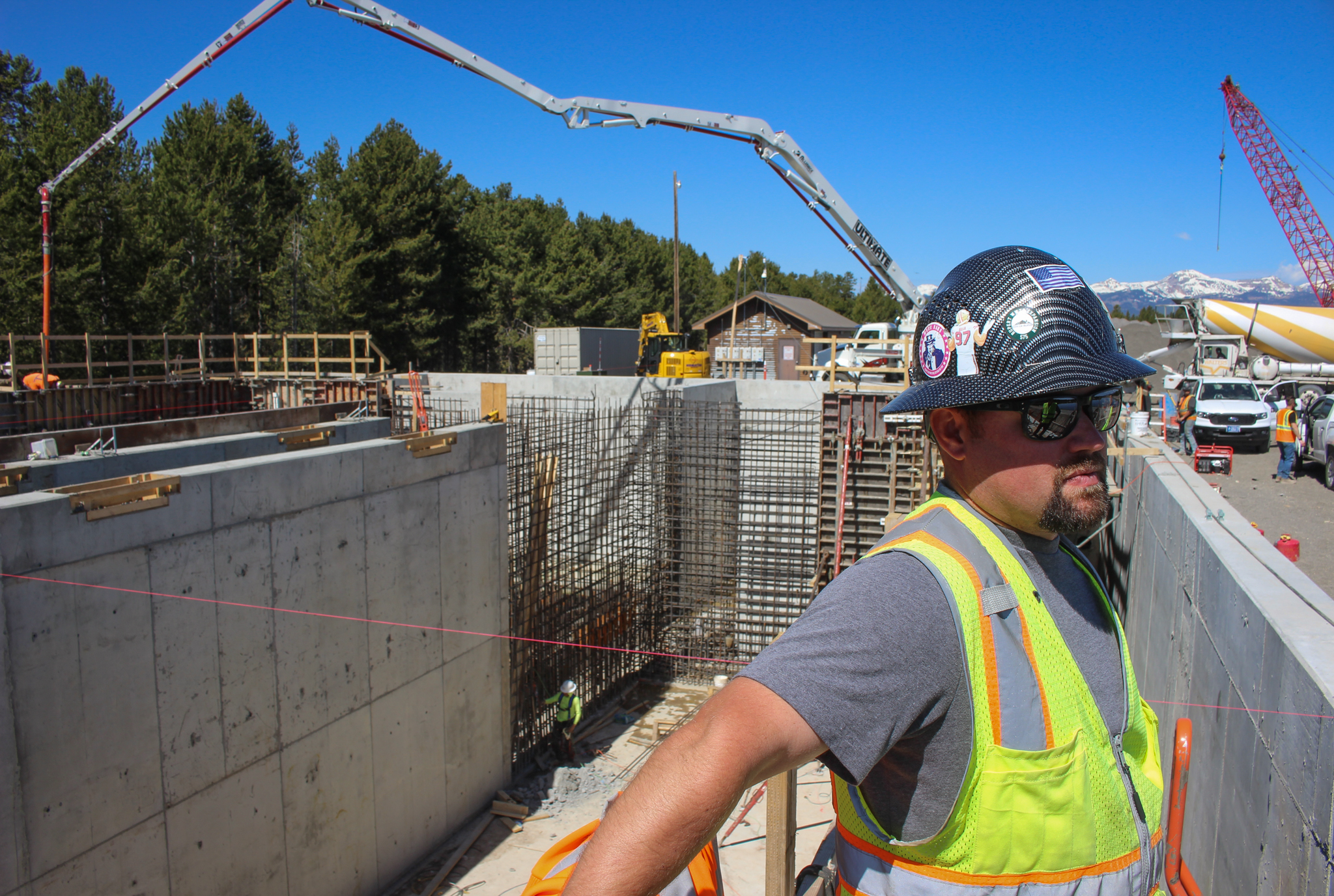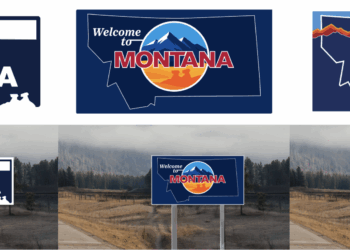By Jen Clancey STAFF WRITER
On the north end of West Yellowstone, crews are constructing a 60,000 foot facility for wastewater treatment, one that can accommodate up to 1.52 million gallons of water a day, more than doubling the current plant’s maximum peak flow.
The facility is expected to be completed in fall 2026 and would serve the town’s need for more efficient water processing for well over 50 years, including adjusting to tourism as a gateway community to Yellowstone National Park and plans for an 80 Acre Housing Project for the local workforce.

Last summer, the current wastewater facility reached a peak flow of 786,000 gallons on a single day—the plant is designed for a maximum flow of 650,000 gallons daily. Even in the quieter months in May 2025, Jon Brown, interim superintendent of West Yellowstone Public Services, Water and Wastewater, reported around 600,000 gallons one day, a sign of the burden even in slower seasons. The project for the new facility, priced at around $37 million, High flows present a challenge for the lagoon-style water processing system.
“Do lagoon systems work? In certain areas, they’re wonderful, they’re cheap. … They worked and provided service for the town of West Yellowstone for many years before we reached those high flows,” Brown said. However, the cold weather in West Yellowstone stalls microbiology, resulting in a lag between the amount of water flowing in and the amount of microorganisms available to “eat” it.
“Once we started getting those high flows, we just simply can’t hold it. But in our situation, for right now, our flows are up, but our microbiology is down,” Brown told EBS on a site tour in May 2025.
The seasonal struggle between microorganisms and water is why Brown and the project’s engineering team opted for an Aeromod facility. In West Yellowstone’s case, they will have a mechanical activated sludge facility, the first Aeromod facility in the U.S. with a structure overhead for cold winters. Brown and engineer Nick Gregersen explained that the new facility will be much more manageable, with systems in place to make it easier on staff to maintain.
Since May 2022, West Yellowstone leaders have recognized the issue of water and sewer processing. The town council approved a water connection moratorium three years in a row to halt further connections to the overburdened facility, and are still waiting on the new wastewater treatment plant plant to allow for the community’s next big build.

New wastewater facility to enable housing project
On the west side of town, 80 acres of land, some cleared and some still forested, awaits West Yellowstone’s 80 Acre Housing Project—a workforce housing development that would finally house year-rounders in town and support the community’s housing needs.
The property was annexed by West Yellowstone in 2021 after a purchase of the U.S. Forest Service land in 2015, Town Manager Dan Walker told EBS. The acres present a rare opportunity to expand and accommodate and house their year-round community in an area landlocked by national park and forest lands.

“I think people really understand the housing challenges that we have here in West Yellowstone and that the town is committed to trying to find solutions to those issues,” Brown said. He noted that sections will be approved for residential zoning at the highest level, R-4, to assure flexibility in types of housing. A June 17 West Yellowstone Town Council discussed the matter further, and in a second reading of Ordinance No. 279, which will determine zoning of the 80 acres, a majority voted to decide on transitional districts outside of the primary residential-zoned project area to be zoned at a later time.
Halt on water connections to expire mid-July
The West Yellowstone Town Council discussed the moratorium on new connections to the water and sewer system in a June 17 meeting. Kyle Scarr, engineer for the town of West Yellowstone, described the possibility of lifting the moratorium and the best ways of doing so.
Based on conversations with town staff, review of facilities plans and water system modeling, there is no immediate concern for hooking up existing lots to the water system. That would include the Madison Addition, a subdivision in town for single-family and low-density housing. In a letter to the council, Scarr stated that as long as use remains consistent with average flows from those kinds of development, adding the neighborhood would be manageable.
“It is critical that the new WWTP be completed as scheduled in fall 2026 to ensure sufficient treatment capacity for anticipated long-term growth. Any setbacks in construction could impact both hydraulic loading and treatment performance, increasing the risk of permit violations,” Scarr stated.
For now, any new connections should not be approved until there is physical capacity to accommodate more demand, Scarr stated in his letter.
If all goes to plan, Brown expects to see concrete pours completed in August and September. For the town, the next year of work could determine how soon the popular tourist destination and community will receive a wastewater treatment facility built for their needs decades into the future.













